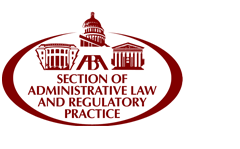Article Title
The Illusion of Interchangeability: The Benefits and Dangers of Guidance-Plus Rulemaking in the FDA's Biosimilar Approval Process
Volume
63
Issue
3
First Page
599
Abstract
On March 23, 2010, President Obama signed into law the ambitious Patient Protection and Affordable Care Act. While media attention focused largely on the sweeping changes the bill makes to the nation’s healthcare system, there was also a less-noticed rider to the bill, the Biologics Price Competition and Innovation Act of 2009 (Biosimilars Act). The Biosimilars Act grants the Food and Drug Administration (FDA) broad new authority to create an accelerated premarket approval pathway for generic competition to biologics in an attempt to drive biologic drug prices down and reduce the overall costs of health care.
Traditionally, inventors of medical products such as drugs and devices obtain patent protection at the United States Patent and Trademark Office (USPTO) for a twenty-year exclusive term and simultaneously must seek FDA approval to market their invention and for a trademark for their brand name.
Because of the complicated and thorough approval process the FDA conducts, it is often expensive and time-consuming for the initial innovator to bring a drug to market. Likewise, it is often prohibitively expensive for a generic follow-on company to bring an analogue to market, after patent protection has expired, through duplicative and costly reapproval of the innovator drug, and it would be unethical to subject further human subjects to unneeded clinical trials.
To deal with these problems, in 1984 Congress enacted a law called the Price, Competition, and Patent Term Restoration Act, which is commonly referred to as the Hatch–Waxman Act. The Act allows generic follow-on drugs to seek accelerated approval by the FDA. In exchange, the law grants limited data exclusivity—and hence, often de facto market exclusivity—for the original brand-name innovator. The Act utilizes a preexisting compilation of all relevant drugs and their clinical indications, the Orange Book, to list generic analogues. Most importantly, Hatch–Waxman allows generic drug manufacturers to use the same FDA approval data as the brand-name manufacturers had in an abbreviated approval application (thus eliminating the need for duplicative human trials and reducing cost for generic manufacturers). The result has been a decrease in the cost of prescription drugs due to increased price competition after the expiration of the original drug’s patent term.
By formulating the Hatch–Waxman Act broadly, Congress has given the FDA wide flexibility to regulate. It has mandated the use of guidance documents, a less costly and time-consuming form of regulating than formal or even informal rulemaking. This guidance mandate has the advantage of increased flexibility and a faster turnaround time than traditional notice-and-comment rulemaking. Nevertheless, if the FDA does not use that flexibility judiciously, the Biosimilars Act may not achieve actual reductions in the cost of prescription biological drugs or significantly affect the cost of health care.
Part I of this Comment discusses the Hatch–Waxman amendments, analogous foreign biosimilars pathways, and the history of biologics approval. Part II discusses the new bill, compares the Hatch–Waxman pathway with the potential biosimilars pathway, and explores key differences between the two that could delay access to both innovator and generic drugs. Part III recommends using notice-and-comment procedures to establish product-class-specific guidance, while retaining flexibility within product classes for clinical requirements, and discourages the FDA from using two-sided biostatistical testing.
